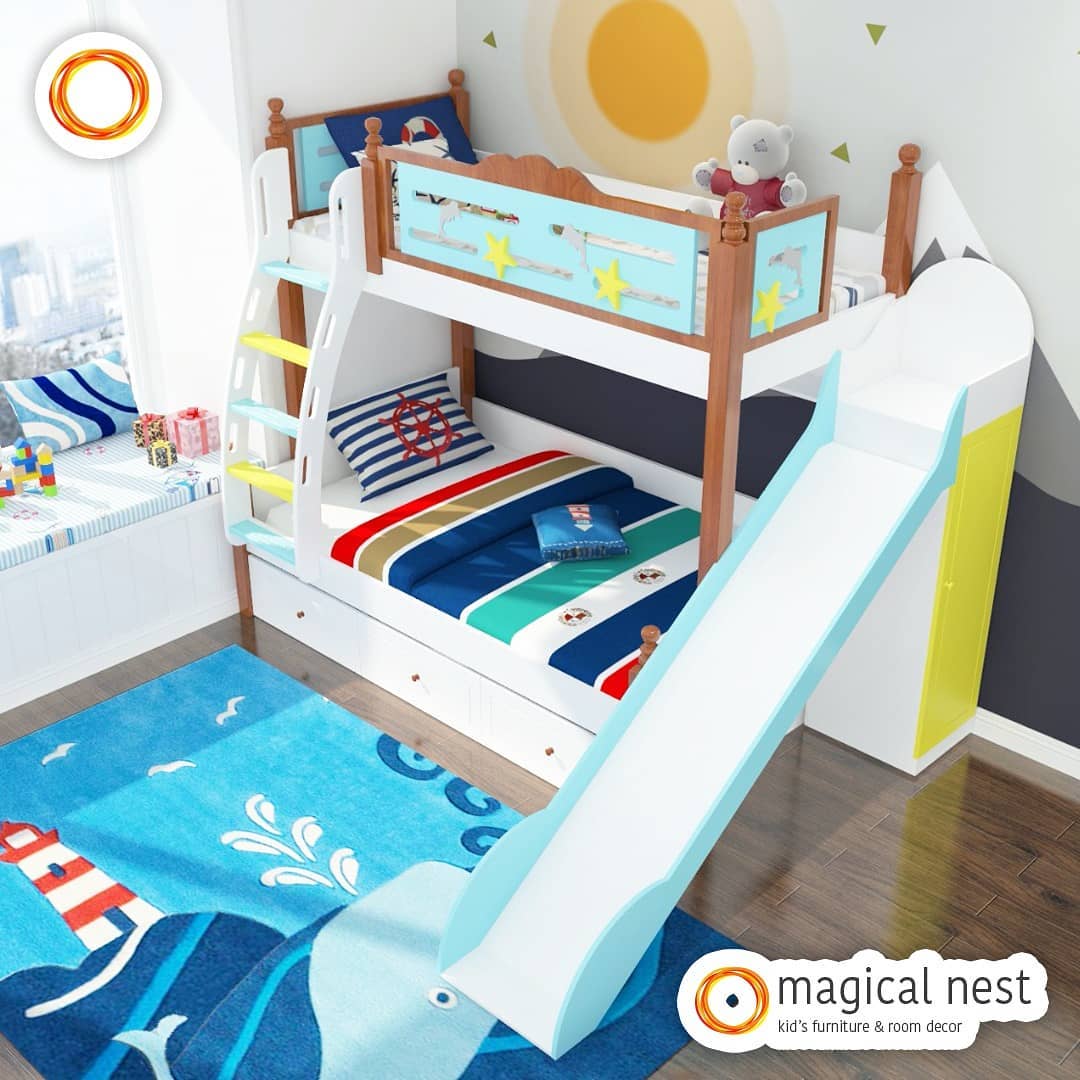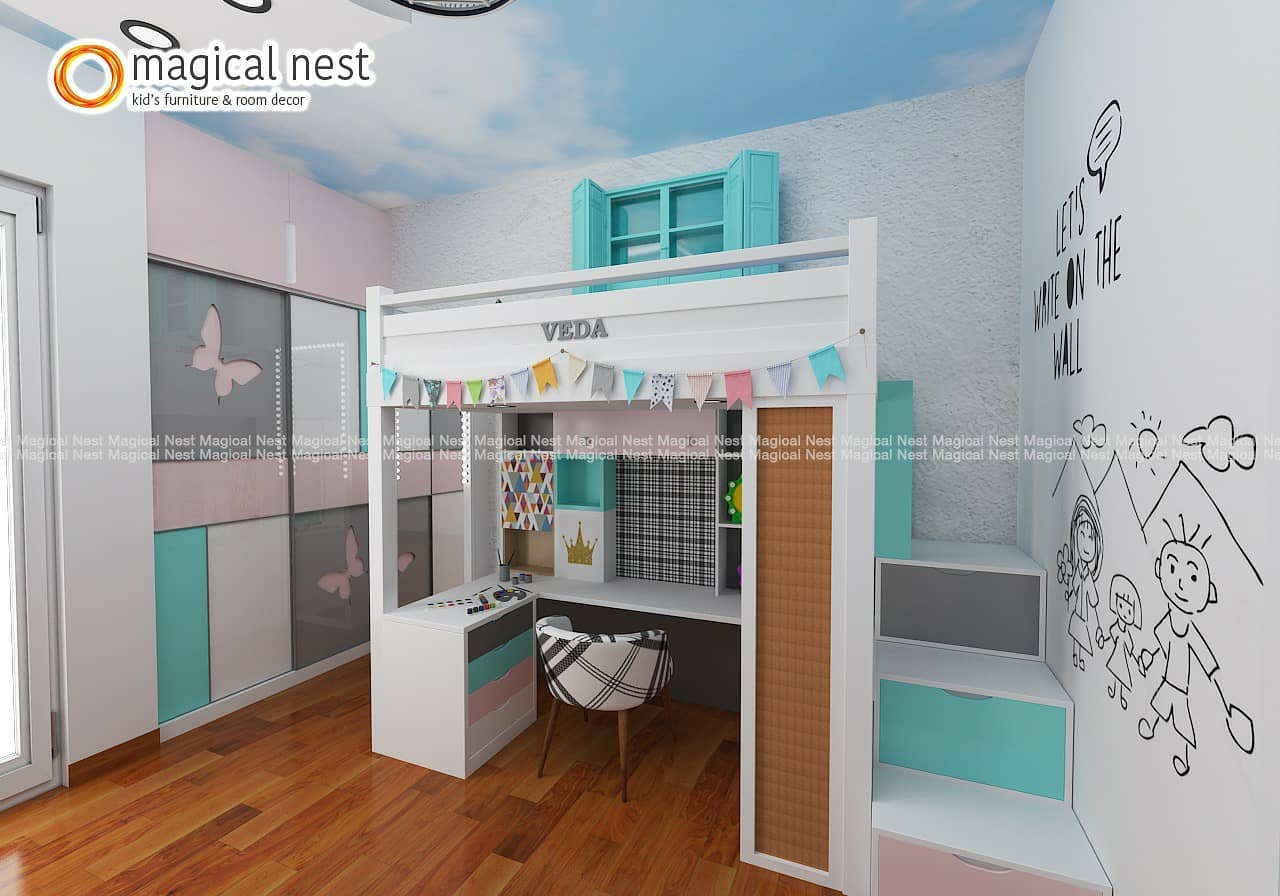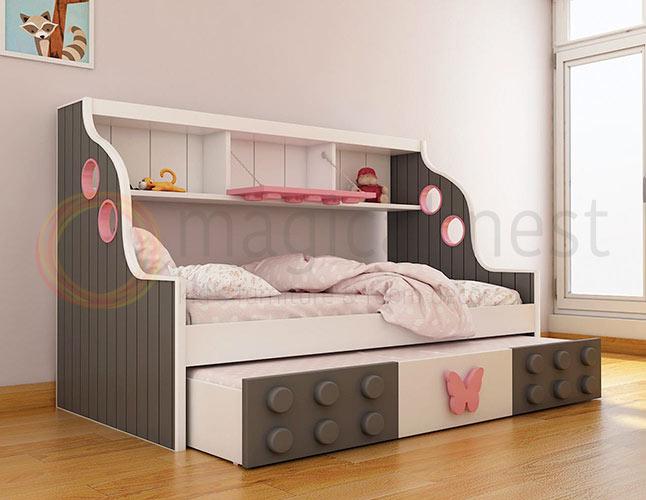
When you think of a kid’s room, the mind conjures up a bright room with lots of colors, vibrant posters on the wall, playful mobiles and organized chaos. But, this template doesn’t suit everyone. One in every 100 children under the age of 10-years in India is autistic. For autistic children, décor isn’t so much about the aesthetics as it needs to be functional. An autistic child’s bedroom needs to be your child’s safe cocoon. It must be calm, soothing and organized. Here are a few tips.
Demarcate Spaces
Children dealing with autism need familiar spaces to be able to cope with changes. Their room is a place they will sleep, play and study. It’s easier for them to focus on these tasks when each activity is limited to a location.
An easy way to divide the space is to create dedicated zones for sleeping, playing, learning and enjoyment. Ideally, the bed should be far from the window and in an area where lighting can be controlled. Play, study and enjoyment areas should be closer to the window where they can get natural sunlight.

Control Lighting
Lighting has a big impact on a child’s sensory system. Avoid white lights as they can distort colors and strobe at high frequencies. As these lights lose power, they may flash and can trigger headaches and seizures. Instead, always use yellow lights.
Natural light is great but it should always be filtered. The room should be planned such that it can be completely darkened at night. Hence, always use blackout curtains or shades on the windows. Use dimmer switches on all lights so that the intensity of light can be controlled.
Also, pay attention to the direction of the light. To minimize the light intensity, you could position the lights such that they are directed upwards.

Choose Relaxing Colors
Colors affect a child’s mood as well as how they function. Bright hues like reds, oranges and yellows may be over stimulate the mind of a child with autism. Warm, neutral shades and tones of blue, green and purple are better suited to the bedroom colors scheme. These colors are comforting and soothing. You can also use shades of soft grey.
Avoid patterns like plaids and polka dots as this may distract the child. If your child tends to lick surfaces, make sure you choose non-toxic paints that are less harmful and easy to wash.
Also, avoid blank white walls as this can make your child lose perception of his/her space.

Pick Quiet Flooring
In the very first episode of Atypical, Sam, an autistic boy talks of how he likes Antarctica – why – because it is a quiet place. Children with a degree of autism are very sensitive to sounds. Hence, you need to choose the flooring of their room carefully.
Natural wood is a great option for flooring. It absorbs sounds and is soft and warm. On the other hand, laminate flooring is avoidable as it can make a lot of noise. Alternatively, carpet the floor. Choose solid colors and tiled carpeting that is easy to install and maintain. Avoid carpets with checkerboard effects.

Plan Plenty of Storage
When you’re decorating a room for a child diagnosed with autism, space needs to be organized. Having books and toys strewn around the room can be frustrating for the child. Hence, plan lots of different types of storage.
Under-bed storage drawers are ideal for things that need to be kept out of sight. Toys and games can be stored in clear stackable drawers. These should be labeled with words, pictures or symbols according to what your child understands best. Breakables and toys which you don’t want your child to play with unattended should be stored in a locked closet.

Choose the Right Type of Bedding
The texture is another common stimulant. Keep this in mind when you’re choosing bed linen. Soft, cotton sheets with a high thread count are ideal. These sheets do not create lumps and can be washed at high temperatures. This ensures that they stay clean without any change in texture. In terms of covering sheets, weighted sheets are ideal and can make your child feel comforted. In terms of colors, you could follow the same theory as used for wall colors.

Be Careful with Electronics
Having a television or laptop in your child’s room is best avoided. Screens are addictive and highly stimulating. They can also have a hypnotic effect on a child. Similarly, remove anything that creates a loud noise or that has too many wires.
On the other hand, some electronics can be soothing. For example, projecting images on the walls or ceiling can help calm your child. White noise machines can also be very helpful. These machines can also induce relaxation and help your child sleep.
Minimize Visual Clutter
A minimal décor style is ideal for your child’s décor. This helps your child stay focused. When choosing wall art, limit your décor to one frame per wall. Choose natural landscapes or abstract prints with spirals and soft curves. Avoid any art with sharp lines and angles.

Create a Sensory Deprivation Area
Even after you choose the perfect colors and lighting scheme, your child may face sensory overload from time to time. Thus, it would be ideal if you could set up a small sensory deprivation area in your child’s room. This could be just a small tee-pee in the corner or a canopy over a pile of pillows.
Some of the things you could keep in this area include soft pillows, a weighted blanket, noise-canceling headphones and your child’s preferred fidget toys. This area can help your child calm down and encourages self-regulation.

Think About the Scents
Scents can be confusing for children with autism. Ideally, scents should come only from natural sources such as plants, fresh flowers and fresh fruits. Consider opening the windows from time to time to get fresh air in.
If you still want to use an oil diffuser, choose scents carefully. Sharp scents like mint and citrus are stimulating and can be used when you want to energize your child. On the other hand, scents like lavender and eucalyptus help your child relax. Dilute the oils as strong scents can be overwhelming.

Prioritize Safety
When it comes to your child’s room, safety is more important than anything else. Safety is even more important in the case of a child with autism. Firstly, make sure all storage units can be locked. Similarly, make sure all the doors and windows can be locked. Soften hard corners and install covers over the wall sockets.
Next, think about special safety measures that cater to your child’s special needs. For example, let’s say your child is a skilled climber. In such cases, you may need to create a designated climbing area with padded sections or a movable crash pad. Similarly, if your child can find a way to get out of any room, you may need to consider an interior child lock.

Our Two Cents
Designing a room for a child with autism can be challenging. If you’re still confused and need help, consider working with a professional interior designer. We’re here to help you design the best room for your child.




















8 comments
Issy
Brilliant blog and gives great ideas that even people on low incomes can use 😀 👍
Michael Pokorny
Do you think it’s possible next time to show a few ideas for family’s that don’t make a half of million a year, ones that the average Joe could afford like myself. Thank!
studio cube
Excellent post and wonderful blog, These sort of interesting posts I really like, keep it up…
Leave a comment
All comments are moderated before being published.
This site is protected by hCaptcha and the hCaptcha Privacy Policy and Terms of Service apply.